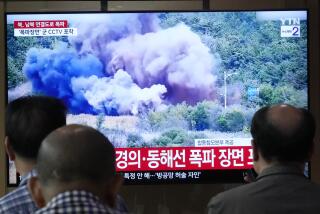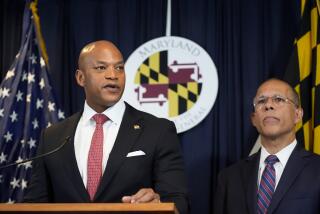South Korean ferry disaster: Debate rages on who is to blame
- Share via
SEOUL -- In the wake of what appears to be South Korea’s worst maritime disaster in decades, a national debate is raging over just who bears the lion’s share of the blame.
Officially, 87 people are confirmed dead and 215 remain missing in the sinking Wednesday of the ferry Sewol. The captain, Lee Joon-seok, has been accused of being away from the helm at the time the ship keeled over, botching the evacuation and breaking South Korean law by being among the first off the boat.
But in times of crisis in South Korea, the public often complains most loudly about the government. Families of those missing from the Sewol have clashed, at times violently, with the authorities and assailed their response as bungling and inadequate.
A Monday editorial in the Joongang Daily newspaper titled “What crisis management?” lambasted the official response, arguing that “the government should do all it can to sharpen its responsiveness to emergencies.”
Late last week, families of the missing, who include many students on an outing, issued a collective statement to the government titled, “Help our children survive; no one is taking responsibility.” Critics have said the government should have had a better disaster response system in place and more closely regulated the shipping industry to prevent accidents such as this.
“People are blaming the government because of their emotions, but legally it’s the company that’s responsible,” said professor Ji Sang-gyu, a legal specialist at Korea Maritime University.
Authorities have sought to project a tough attitude toward Cheonghaejin Marine, which owned and operated the ferry. On Monday morning, South Korean President Park Geun-hye described the actions of the captain and crew of the ferry as “tantamount to murder.”
Meanwhile, four more Cheonghaejin Marine employees -- three Sewol crewmembers and one engineer -- were arrested, prosecutors said. The captain and two other crewmembers were detained last week.
Questions continued to percolate, though, about the response of maritime officials and regulators.
Released transcripts of the Sewol’s communications with the coast guard and response centers on Jeju Island, the ferry’s destination, and the port of Jindo indicated that there was confusion among the three entities in coordinating the response to the Sewol’s distress calls.
Speaking Monday afternoon at a briefing in Jindo, where families of the missing are gathered, a government spokesperson described how the Sewol’s initial requests for rescue ships -- made to the Maritime Traffic Control Center in Jeju -- were not immediately conveyed to the coast guard. That, the spokesperson said, could have delayed the response.
The ferry sinking has also thrown a light on South Korean labor laws and sharp differences in pay and benefits between full-time employees and contractors.
Lee, the captain, was not an employee of Cheonghaejin Marine but a contractor. That has led some observers to ask whether he didn’t feel sufficiently invested in the ship he was responsible for and therefore didn’t take the steps expected of a captain.
Lee was not in control of the ship at the time of a sharp turn believed to have led to the sinking. Instead, the 25-year-old third mate was reportedly steering through a difficult stretch of water for the first time.
Government records showed that vessels belonging to Cheonghaejin Marine have been involved in minor accidents, mostly small collisions with other ships, four times in the last 10 years. No casualties were reported in any of those cases, but Ji questioned whether regulators should have taken a closer look at the company.
“As Cheonghaejin had a history of accidents, they should have been under some extra scrutiny, and the government should implement new safety measures such as more inspection of ships before they leave port,” the professor said.
Upon taking office last year, Park sought to demonstrate that her administration was serious about security. She even took the symbolic step of renaming the Ministry of Public Administration and Security as the Ministry of Security and Public Administration, to emphasize that security was the first priority.
The Park administration also pledged at that time to appoint more experts to the ministry who could improve the country’s disaster response systems.
But her administration has been embarrassed by the performance of some of its officials. On Monday, the government accepted the resignation of an official from the Ministry of Security and Public Administration who was criticized as insensitive for taking a group photo in front of the families of missing passengers.
A rescue operation continued Monday, but no survivors have been found in recent days, and the ship is now completely submerged.
The vice principal of a school that had several hundred students aboard the ferry took his own life last week in despair over the incident. On Monday, an engineer from the ship who had been questioned by investigators was found in his motel room in the process of attempting suicide. The engineer, Son Mo, 58, was not facing criminal charges, authorities said.
Borowiec is a special correspondent.
More to Read
Sign up for Essential California
The most important California stories and recommendations in your inbox every morning.
You may occasionally receive promotional content from the Los Angeles Times.










